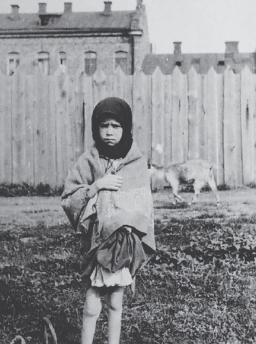In 1932–33, dictator Josef Stalin engineered a food shortage in Soviet Ukraine. His goal was to destroy Ukrainian ambitions for independence and ensure Ukrainian subservience to the Soviet state. As a result, millions of Ukrainians experienced the extended suffering of desperate hunger and died. This famine‐genocide is now known as the Holodomor.
Covering the Holodomor: Memory Eternal
Misinformation and deception play a crucial role in mass atrocities such as the Holodomor.
By Jeremy Maron
Published: November 13, 2020
Tags:

Photo: CMHR, Ian McCausland
Story text
The rest of the world was slow to realize the extent of the atrocity. This is partly because of how it was handled by the news media at the time. In the face of this genocide, journalists played different roles. Some risked their careers to expose the truth, while others tried to cover it up.
Many people, especially in North America, likely learned about the famine in Ukraine through coverage by prominent New York Times reporter Walter Duranty. His reporting was misleading, however. Duranty, a Soviet sympathizer, deliberately trivialized the extent of the starvation and disguised the role of the Soviet regime in intentionally creating the food shortage.
In contrast, Welsh journalist Gareth Jones and English journalist Malcolm Muggeridge separately attempted to expose the intentional nature and massive scope of the famine. They continued these efforts despite harsh responses from Duranty and the Soviet government, little support from fellow journalists and threats to their professional lives for pursuing their reporting.
Despite efforts by journalists like Muggeridge and Jones, the widespread influence of Walter Duranty’s reporting and the overall Soviet campaign of secrecy and disinformation suppressed information about the Holodomor for decades. It took another 50 years and considerable effort on the part of Ukrainian communities for this story of profound suffering and mass death at the hands of the Soviet Union to be widely recognized and acknowledged by the rest of world.
Covering the Holodomor: Memory Eternal is a film exploring the Holodomor through the lens of media reporting. It looks at the role and responsibility of reporters confronted with human rights violations.
A Ukrainian language version of the documentary is also available.
“Covering the Holodomor: Memory Eternal” can also be viewed at the Museum in the Breaking the Silence gallery on Level 4.
Ask yourself:
In an era of “fake news,” how can I be sure I am getting meaningful and reliable information?
Why is it important to remember historical atrocities?
How do I ensure my voice is heard when I see an atrocity happening outside my country?
Suggested citation
Suggested citation : Jeremy Maron. “Covering the Holodomor: Memory Eternal.” Canadian Museum for Human Rights. Published November 13, 2020. https://humanrights.ca/story/covering-holodomor-memory-eternal
